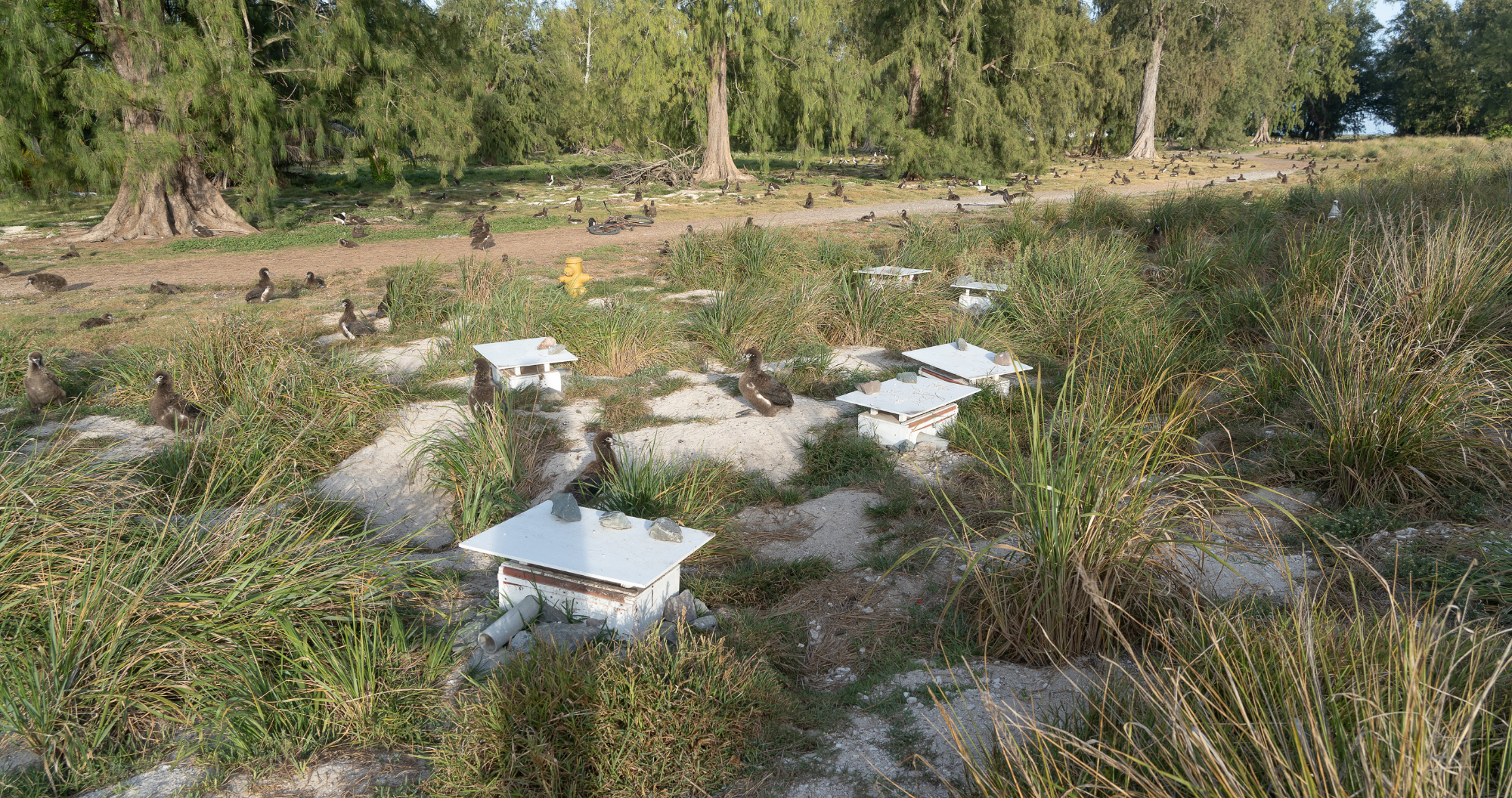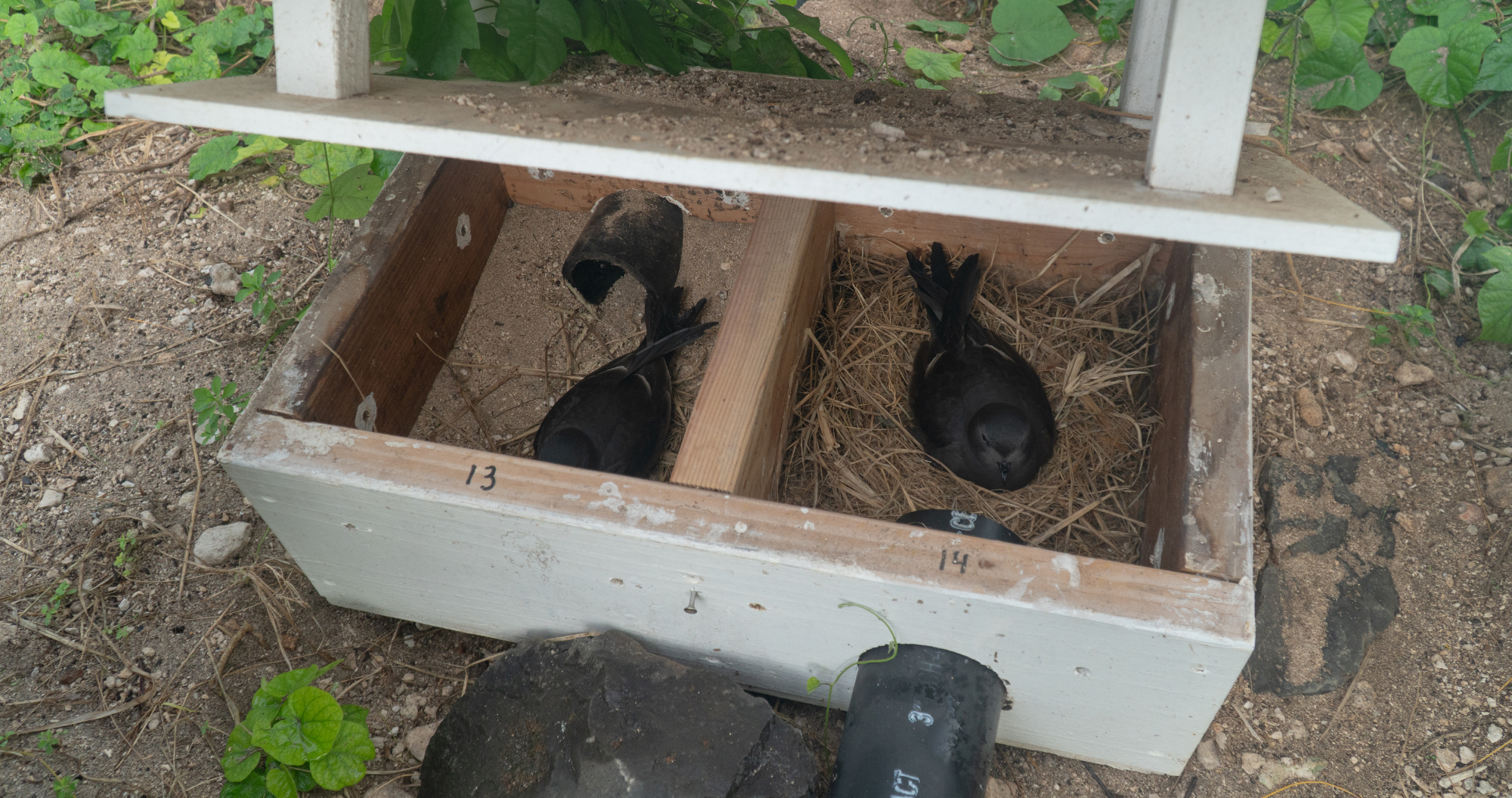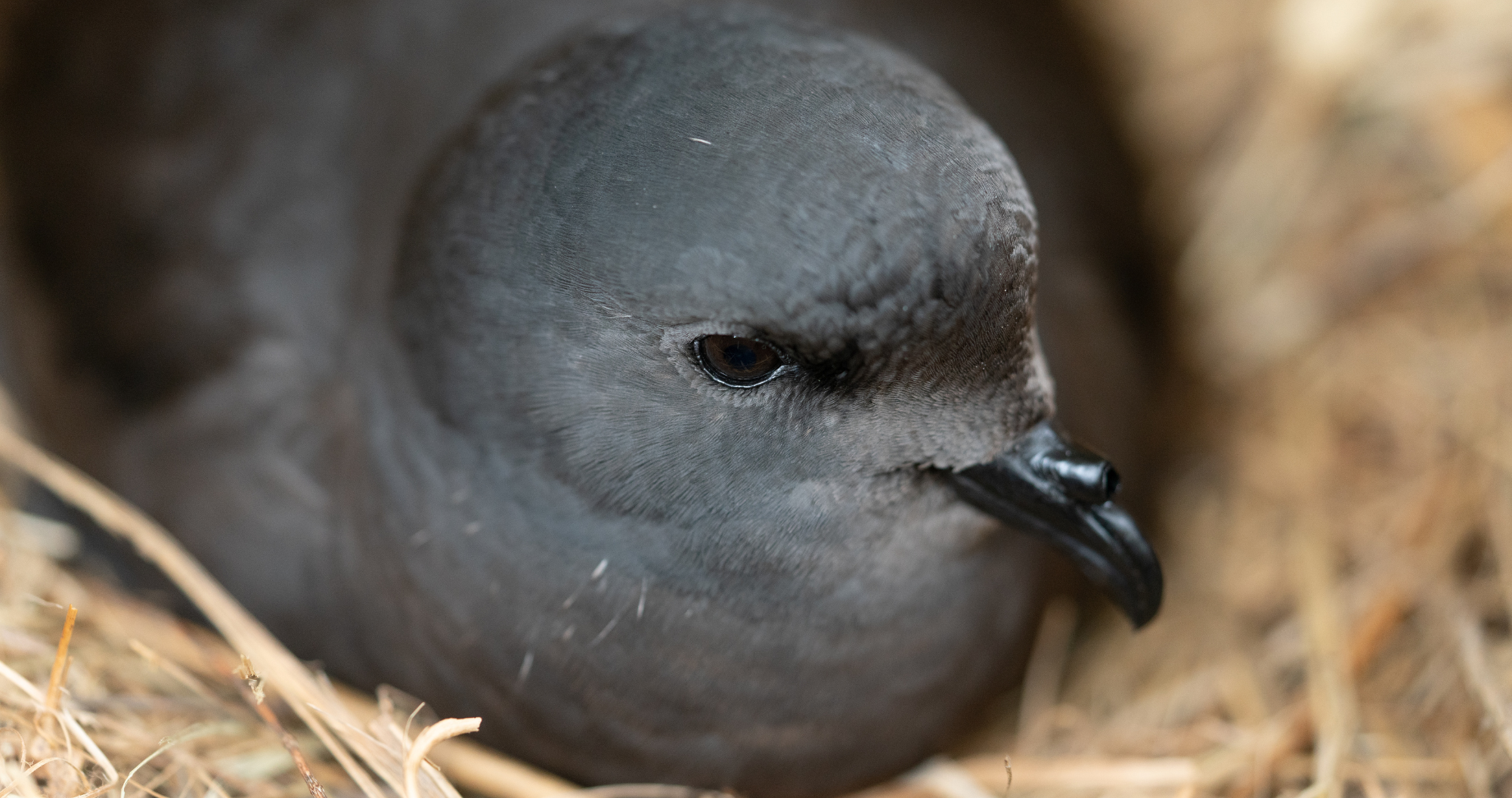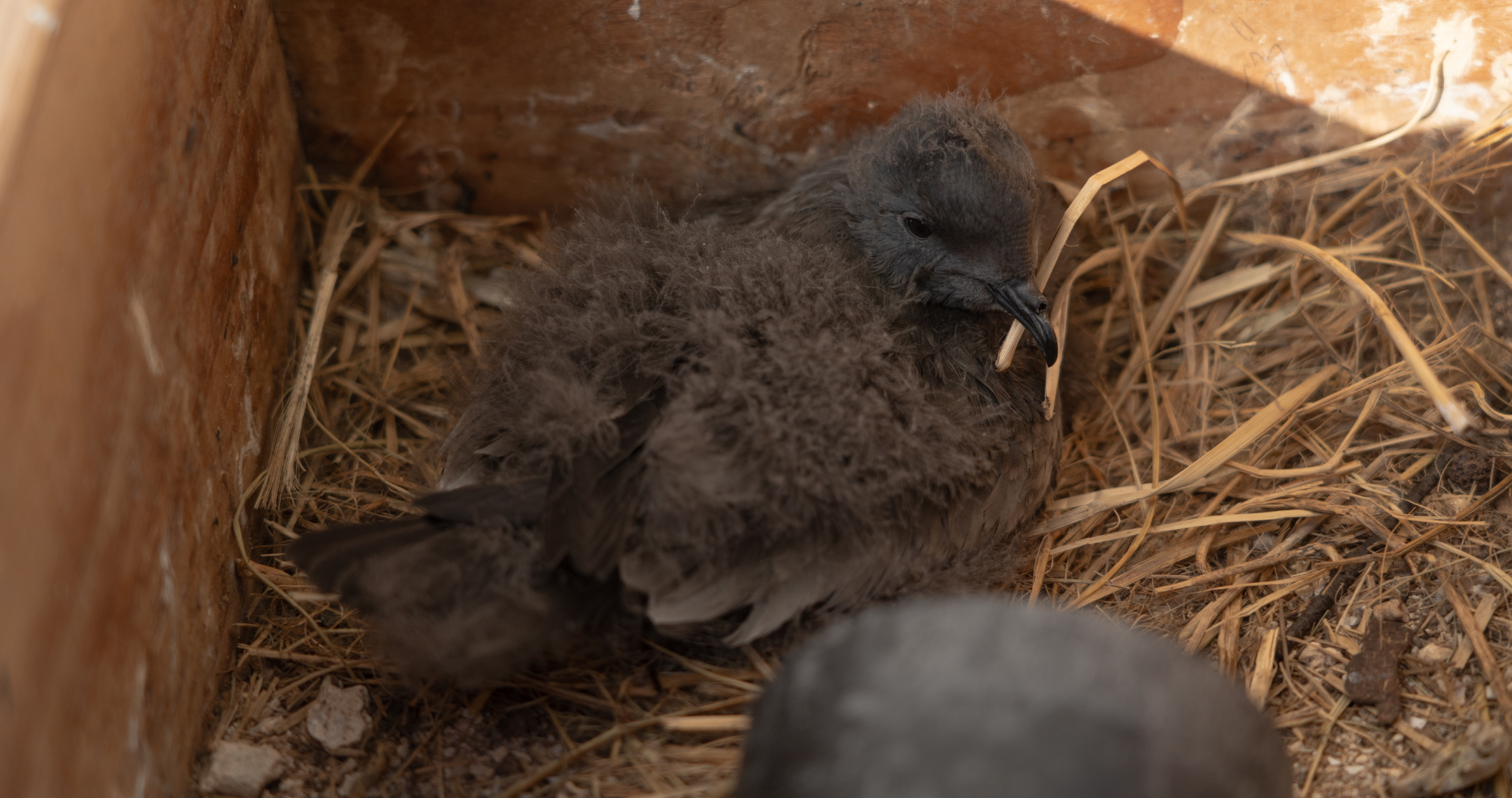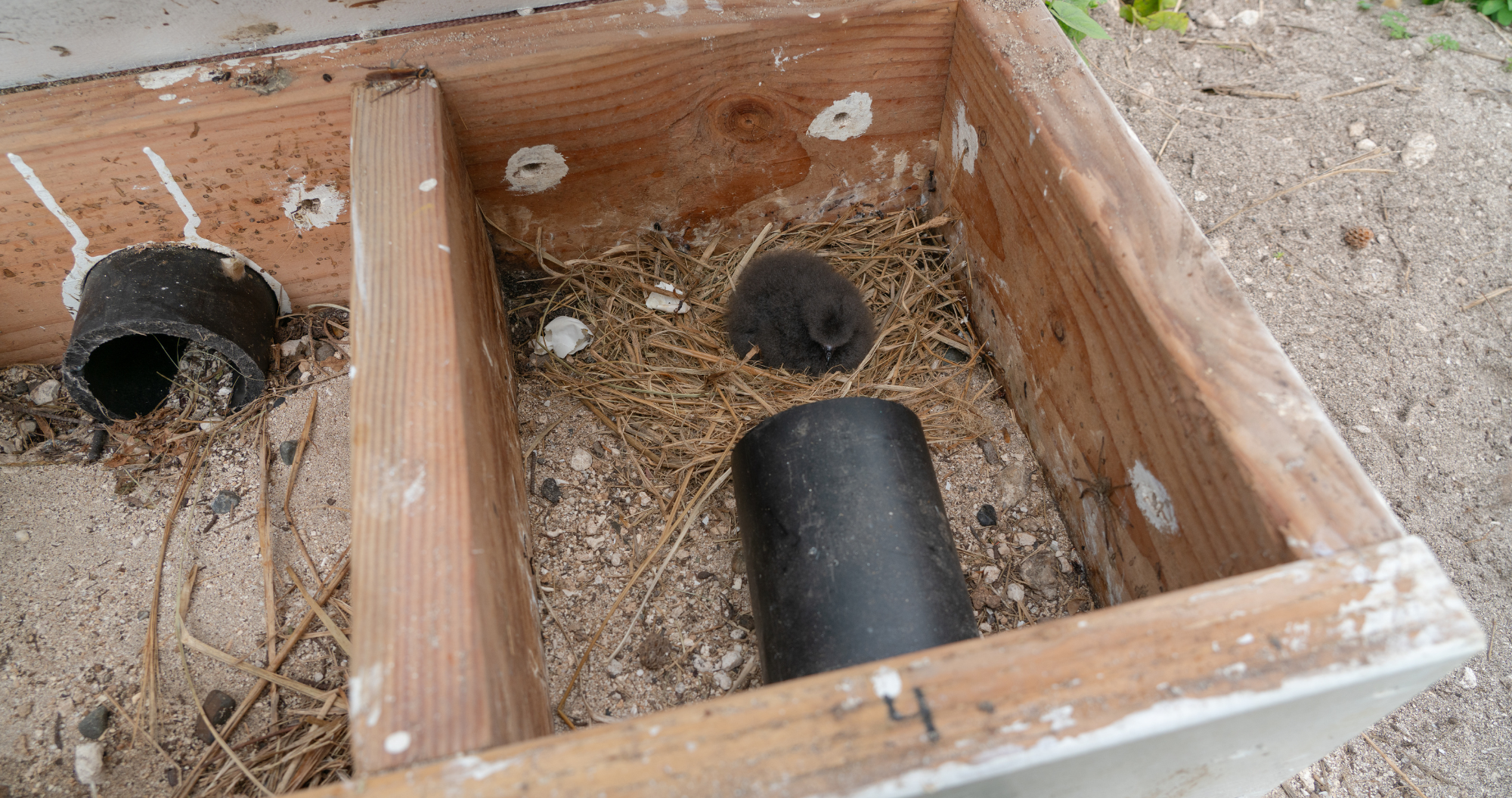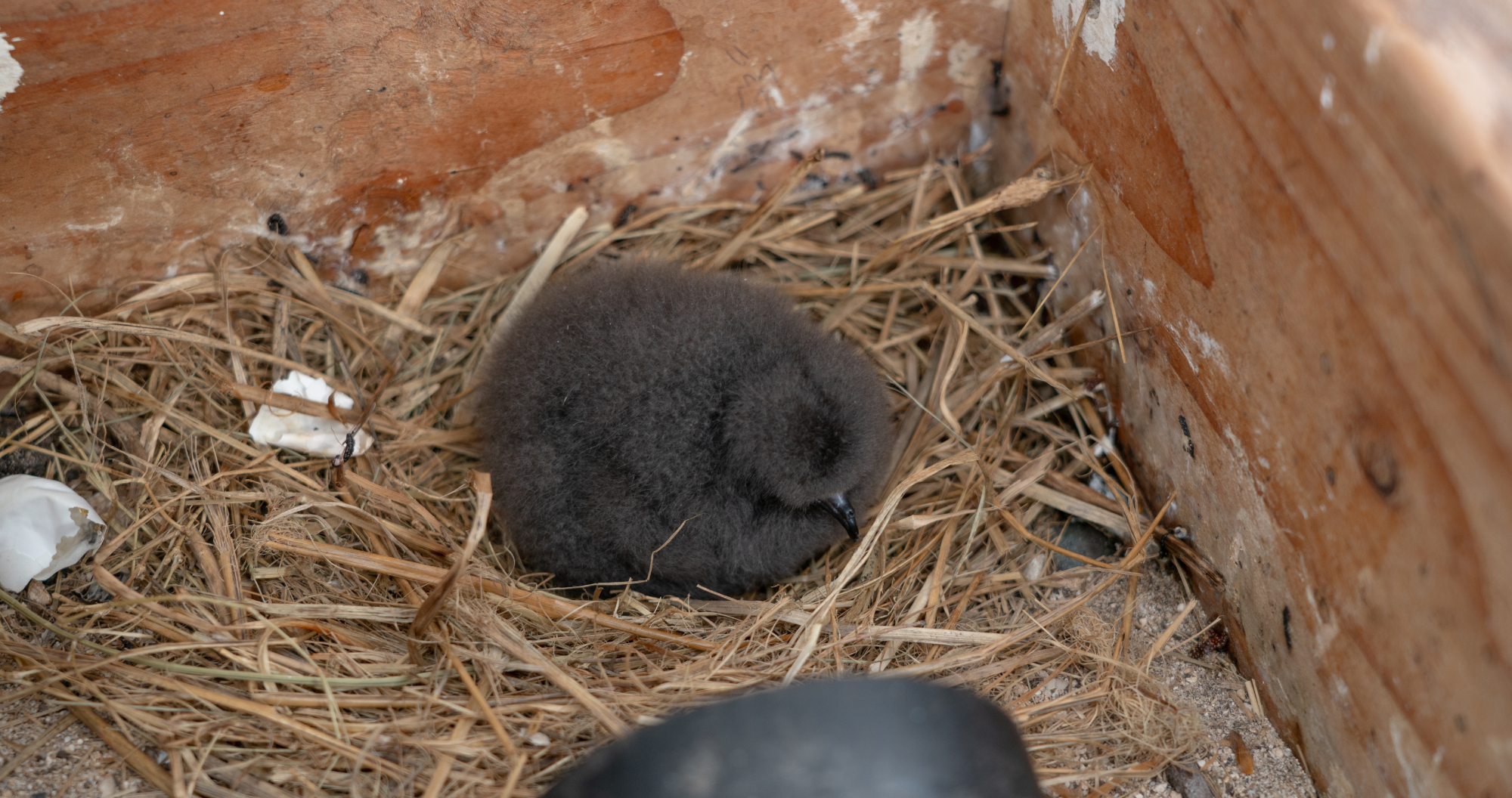ʻAkihikeʻehiʻale or Tristram's Storm Petrel is one of many seabird species which have at least half of its global breeding population located within Papahānaumokuākea Marine National Monument. Like the Nunulu or Bonin Petrel, this species was likely eliminated by the introduction of black rats at Midway Atoll in 1943. But following the eradication of rats in 1996 individuals were occasionally sighted with confirmed breeding in 2016.

Further study at Midway in recent years has confirmed continued breeding within the atoll at Sand Island and more significantly on Eastern Island (USFWS unpublished data). The global population estimate for this species is still relatively small (20,000) and they exist primarily on low-lying islands, that makes them a species at risk and a priority for conservation.
Though one of the largest species in the storm petrel family, Akihikeʻehiʻale weigh only a few ounces and their dark plumage and nocturnal lifestyle make them very difficult to study. Akihikeʻehiʻale is their Hawaiian name which describes its foraging behavior “as the bird that steps on water.” Akihikeʻehiʻale can sometimes be easiest to detect by listening for their unique call at night, a song that has been compared to what giggling, drunk gnomes might sound like.
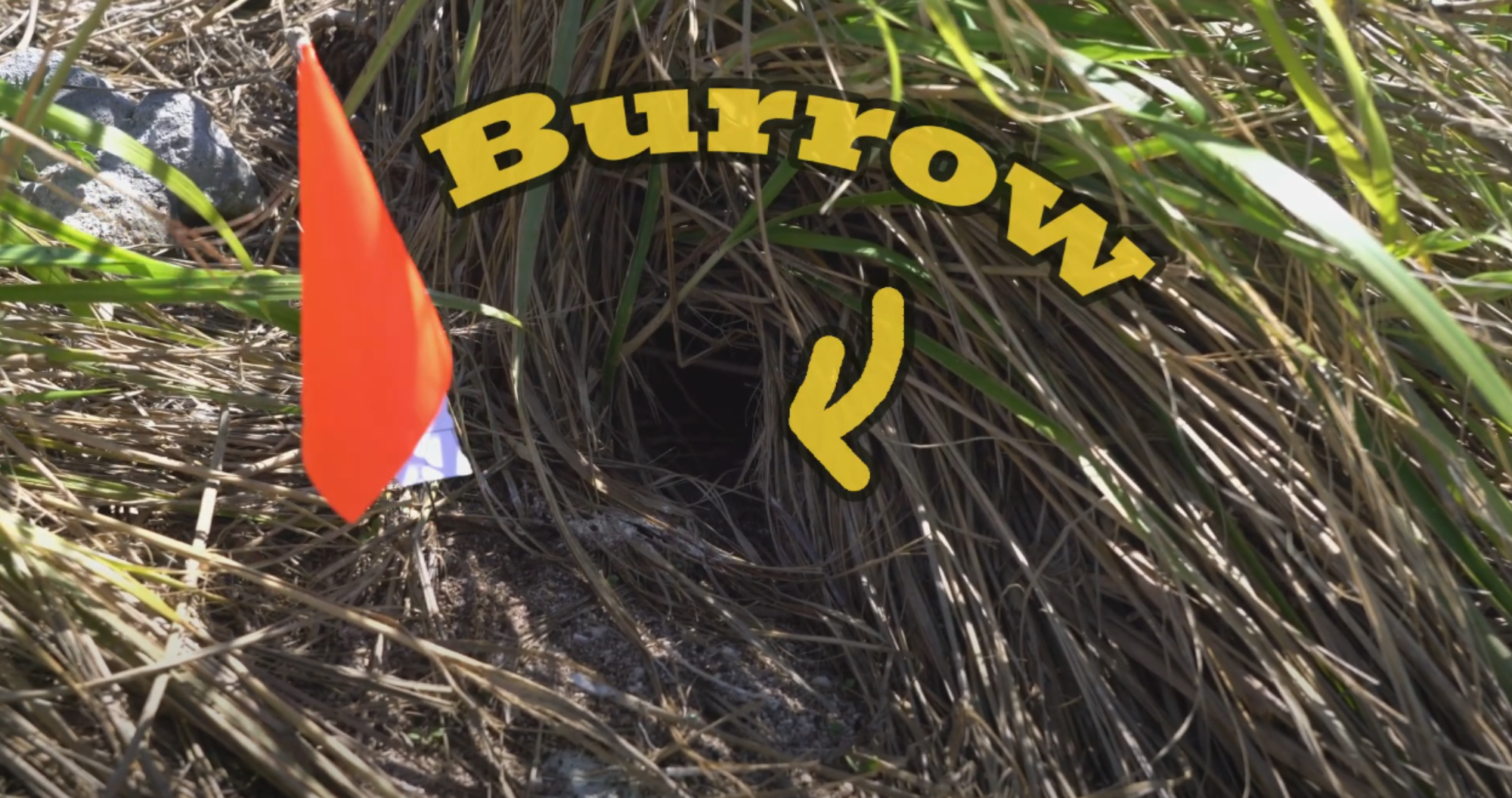
On Midway, they are hard to study because of the massive number of Nunulu (Bonin Petrel) nests in similar underground burrows. Nunulu are larger in size and have been known to displace Akihikeʻehiʻale from their burrows. Luckily, Akihikeʻehiʻale tend to prefer digging in harder, rocky ground, which are areas that Nunulu tend to avoid. Akihikeʻehiʻale have found niche nesting habitat in the World War II revetments on Eastern in piles of rubble built in the 1940s to provide protection around the runways for airplanes. A survey of those revetments in 2021 found over 100 previously unknown active Akihikeʻehiʻale nests!
Human-made nest boxes are another way to attract more Akihikeʻehiʻale. In the short video below, created by U.S. Fish and Wildlife Service Volunteer Dan Rapp, watch how he and Sarah Youngren craft the boxes and position them on Eastern's revetments. The box's entrance pipes are sized to allow Akihikeʻehiʻale in but hopefully keep Nunulu out. Note the audio system that was purchased in 2021 by your monetary support. You don’t want to miss the end – turn up the volume to hear their quirky, crazy sounds!
The following slideshow offers a closer look at the Akihikeʻehiʻale enjoying their new homes. This is now their primary hang out spot, as well as where the bulk of the nest boxes are, on Sand Island.
If time allows, a full or partial annual census is completed on Eastern Island late February or early March when all eggs should have hatched or failed. In 2021, four main nesting areas were identified on Eastern Island, and these are used for the annual census. Three of these areas have been specially marked to alert humans that these are sensitive areas.
A full census was completed in 2021 and 2022, while in 2024 a partial census was completed. Based off the 2024 census results, it appears the breeding population is stable. More time with the data is needed to look for potential trends. The current breeding population for the atoll is estimated around 200-400 individuals. Watch Dan Rapp's video below to see how the 2024 census was accomplished!

Dan Rapp is a seabird biologist, as a profession and a way of life. His seabird captivation began during a winter of seabird work at French Frigate Shoals in 2010. He is now a U.S. Fish and Wildlife Service volunteer working on Midway. Unfortunately his time on Midway currently ends in mid-September 2024 so the tagging and census work on Akihikeʻehiʻale will have to take a back seat until adequate funding is secured to keep him on. Dan’s interest in cinematography and photography developed in step with his seabird career. He is slowly learning the art and acquiring the skills to capture and share the world he lives in.
Article by: Krystal Winn and Dan Rapp

